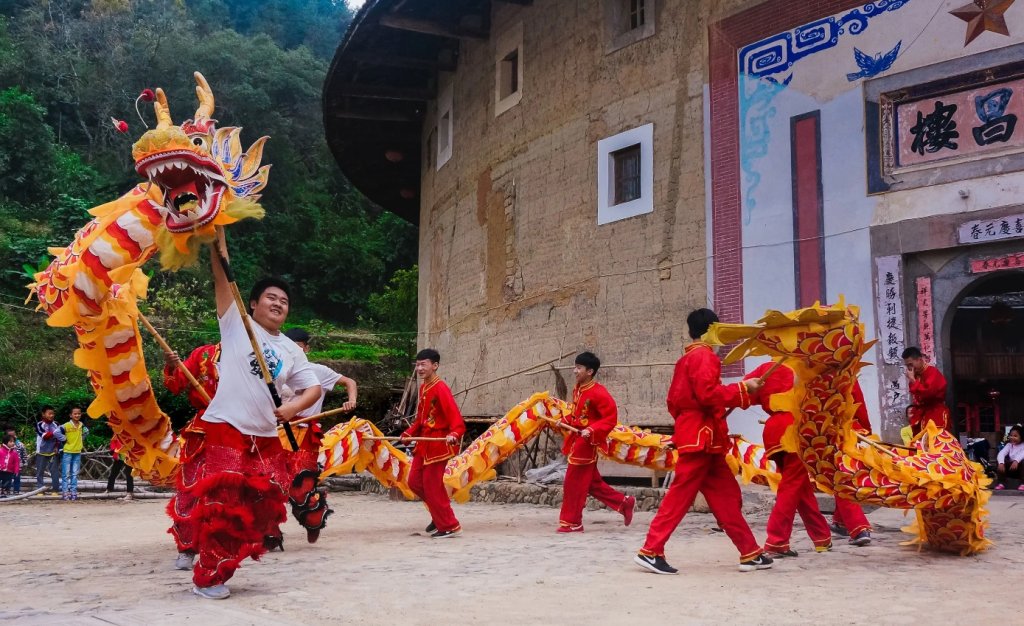
Do you know the traditional chinese dragon art? The Chinese dragon, a mysterious symbol with a long history, represents authority, auspiciousness, and profound cultural heritage. Its unique image holds an important position in Chinese civilization and is hailed as a symbol of the country. The diverse forms of dragons, from traditional painting to modern technology, all demonstrate the unique understanding and reverence of Chinese mythology and legends. The dragon shines with vitality during the Spring Festival dragon dance and celebration, and is an indispensable spiritual soul in Chinese culture.
1. The Origin and Legend of Chinese Dragons

The Chinese dragon, as one of the symbols of Chinese civilization, has a long history and rich legends. Legend has it that dragons originated in ancient times and are considered a mysterious creature representing power, holiness, and auspiciousness. The appearance of dragons is often accompanied by natural wonders and is an indispensable element in Chinese culture.
2. The image characteristics of dragons
The image features of Chinese dragons mainly include elements such as dragon whiskers, scales, horns, and claws. It usually presents a snake like body, but is larger than a snake, covered in scales, appearing fierce and mysterious. The image of the dragon is widely used in art and literary works, becoming a unique artistic symbol in Chinese culture.
3. The cultural symbol of the dragon

The Chinese dragon is not only a biological image, but also a cultural symbol. Dragon is regarded as a representative of Chinese culture, representing the prosperity and peace of the country. In ancient times, emperors often used dragons as symbols and were known as “descendants of dragons” to demonstrate their supreme status. Meanwhile, dragons also possess a powerful mysterious power in folk beliefs, believed to bring good luck and well-being to people.
4. The inheritance and evolution of dragons
The image of the Chinese dragon has undergone multiple transformations throughout its long history. From the initial myths and legends to later literary and artistic works, the image of dragons gradually became rich and diverse. Dragons from different historical periods and regions have their unique forms of expression, showcasing the diversity and inclusiveness of Chinese culture.
5. The artistic expression of dragons
The image of the dragon is widely expressed in Chinese art forms such as dragon painting, dragon sculpture, and handicrafts. Traditional dragon dance and dragon boat are also unique ways to express dragon culture. Artists use different artistic techniques to vividly and dynamically depict the image of dragons, injecting a dynamic force into traditional Chinese art.
6. Dragon Festivals and Celebrations

In some important festivals in China, the image of the dragon often plays an important role. For example, the dragon dance performance during the Spring Festival is an important activity in traditional Chinese culture, symbolizing the hope and auspiciousness of the new year. In addition, in some special celebrations, such as opening ceremonies and weddings, the image of the dragon is often warmly welcomed.
7. Dragon’s Technology and Commercial Applications
The image of a dragon not only exists in traditional culture and art, but is also widely used in modern technology and commercial fields. Dragon elements often appear in some corporate logos in China, symbolizing the strength and prosperity of the enterprise. Meanwhile, in the field of technological innovation, the image of the dragon is often used for naming and design to showcase China’s technological strength.
8. International influence of dragons
With the international dissemination of Chinese culture, the image of the dragon has also had a profound impact on a global scale. Traditional cultural activities such as dragon dance and dragon boat races have been widely inherited in Chinese communities and cultural festivals around the world. At the same time, more and more international people are showing a strong interest in Chinese dragon culture, believing it to be a cultural symbol full of mystery and beauty.
9. Protection and Inheritance of Dragons
Due to the importance of dragons in Chinese culture, the protection and inheritance of dragons have become particularly important. On the one hand, it is necessary to protect the image of the dragon from infringement through relevant regulations and policies; On the other hand, it is necessary to strengthen the inheritance and education of dragon culture, so that more people can understand and cherish this unique cultural symbol.
Epilogue

The Chinese dragon, as a treasure of Chinese civilization, carries profound historical heritage and cultural connotations. Its image not only holds a pivotal position in Chinese culture, but also stands out on the international stage. The traditional Chinese dragon art are the pride of the Chinese nation and the link between ancient and modern times, continuing to showcase the mysterious and charming Eastern civilization to the world.
Send us your requirements now, we will reply to your email within 24 hours
